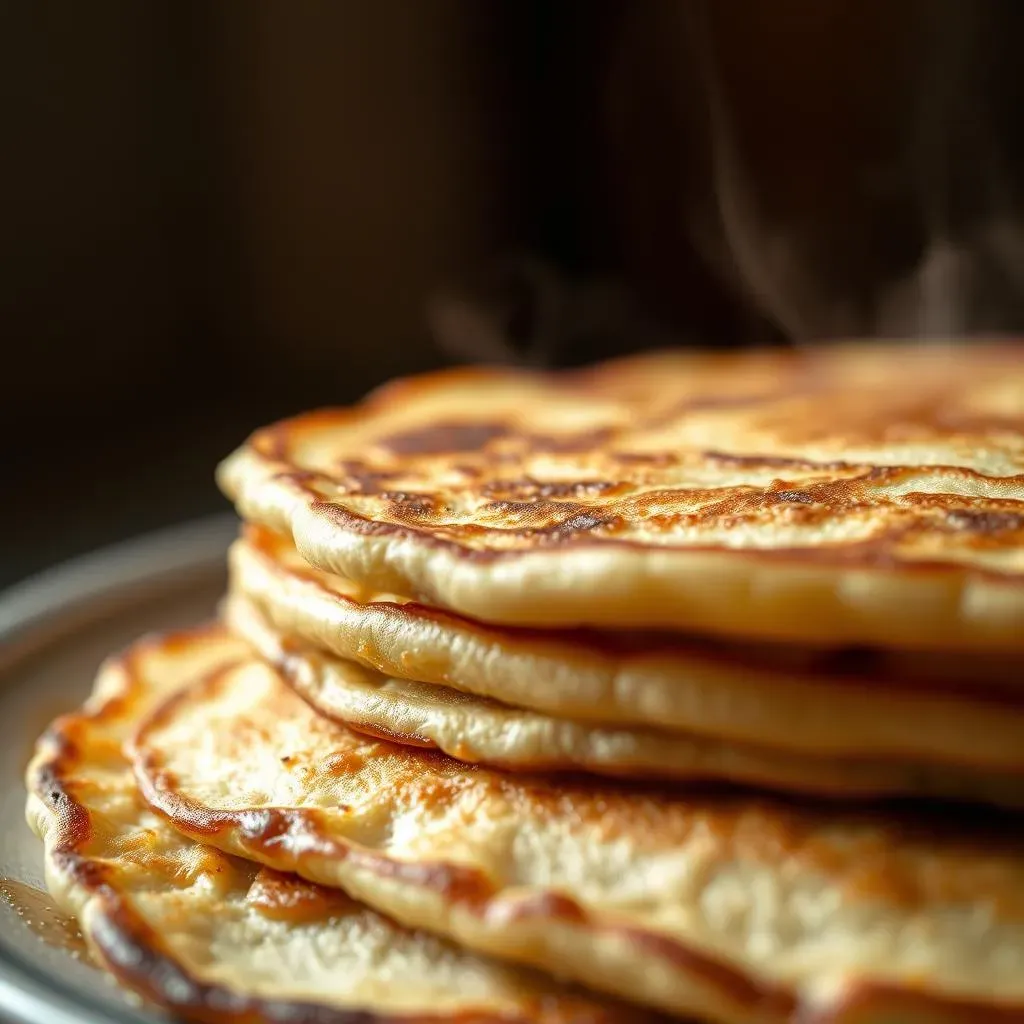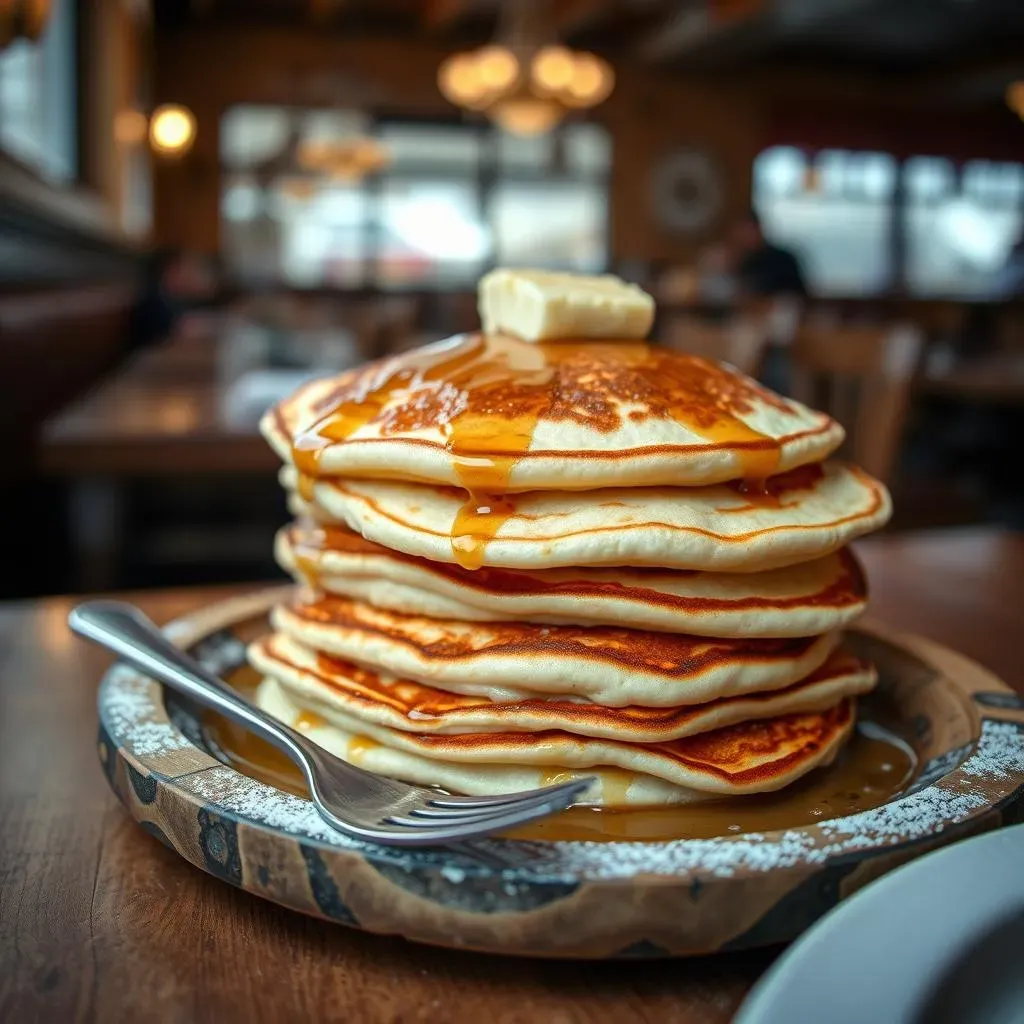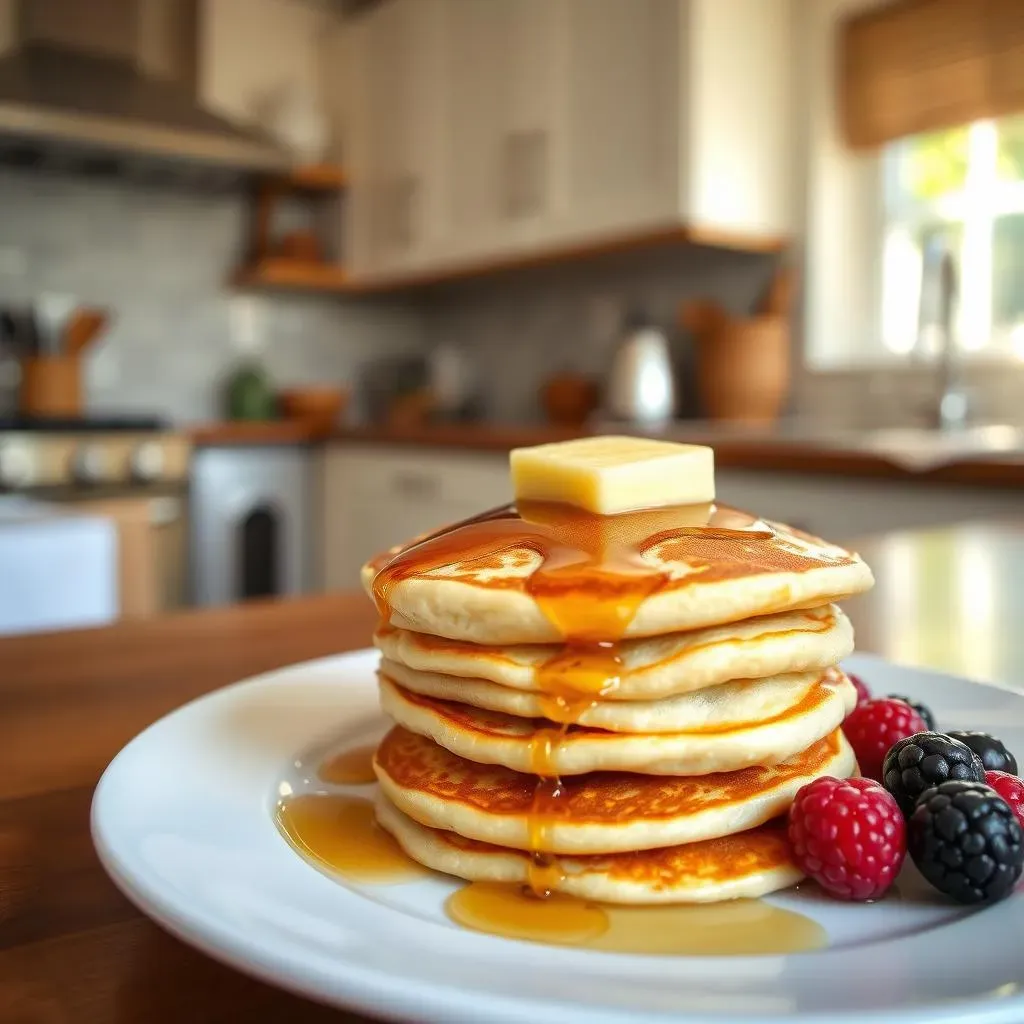Table of Contents
Ever found yourself wondering, "Why are pancakes so good?" It's a question that plagues breakfast lovers everywhere, and honestly, it's a valid one. They're simple, yet they hold a magical power over our taste buds, a fluffy, golden-brown enchantment that can make even the gloomiest morning feel a little brighter. We've all had that experience, the perfect stack arriving at the table, and you can't help but smile. This isn't just about the taste; it's about the texture, the smell, and maybe even the memories they bring. This article is going to explore all the reasons that make pancakes so irresistible. We will uncover the science behind the deliciousness, compare home-cooked to restaurant versions, share tips for making your own perfect batch, and even get a little adventurous with some fun variations. So, get ready to dive in and discover all there is to know about why pancakes are so good. Prepare to have your breakfast game elevated.
The Science of Delicious: Why Pancakes Taste So Good

The Science of Delicious: Why Pancakes Taste So Good
The Maillard Reaction: The Magic Behind the Golden Crust
so you're probably thinking, "Science? In my pancakes?" Yes! It's not some crazy lab experiment, but rather a chemical process called the Maillard reaction. This fancy term just means that when the sugars and amino acids in the batter get heated, they start to brown, creating hundreds of flavor compounds. Think of it like the browning of a steak or the crust on bread—it's what gives pancakes that amazing, toasty, slightly nutty flavor. Without it, they'd just be bland, pale discs. So, the next time you see that golden-brown hue, you're witnessing science at its tastiest.
This browning also creates that slightly crisp edge we all love. It's a textural contrast that keeps you coming back for more. It's not just about taste; it's also about how the pancake feels in your mouth. The Maillard reaction is the unsung hero of the pancake world, working tirelessly to make your breakfast a culinary masterpiece. It's the reason why that first bite is always so satisfying.
The Perfect Ratio: Balancing Act of Ingredients
It's not just about the heat, though. The recipe itself is crucial. The balance of wet and dry ingredients is a delicate dance. Too much liquid and you get a flat, sad pancake. Too little and it's dry and crumbly. The ratio of flour, eggs, milk, and leavening agents like baking powder is what creates the ideal fluffy texture. Each ingredient plays its part. The flour provides structure, eggs add richness, milk provides moisture, and baking powder creates those air pockets that make the pancake light and airy. It's a carefully crafted system of ingredients working in harmony.
Think about it, it's like building a house. You need the right amount of cement, bricks, and wood to make it sturdy and comfortable. The same goes for pancakes. The proportions of ingredients matter more than you think, it's not just about throwing things in the bowl and hoping for the best. It's a calculated process, and when done right, the result is a symphony of flavors and textures that make the perfect pancake.
Ingredient | Role in Pancake |
|---|---|
Flour | Provides Structure |
Eggs | Adds Richness and Binding |
Milk | Provides Moisture |
Baking Powder | Creates Air Pockets (fluffiness) |
Restaurant vs. Home: Unlocking the Secrets of Good Pancakes

Restaurant vs. Home: Unlocking the Secrets of Good Pancakes
The Griddle Factor: Restaurant Magic
let's be real, restaurant pancakes just hit different, right? It's not just in our heads, there are a few reasons for this. One big factor is the griddle. Restaurants use these massive, flat surfaces that distribute heat super evenly. This means that every inch of your pancake gets the same amount of love, resulting in that uniform golden-brown color and even cooking. It's hard to replicate that with a home pan that might have hot spots. Plus, they're usually seasoned really well from years of use, which adds a little something extra, a kind of subtle, smoky flavor that you just can't get from a brand new pan.
They also tend to have better temperature control. They can dial in the perfect heat to cook the pancakes just right, not too fast and not too slow. This is important for getting that perfect balance of crispy edges and fluffy interior. At home, we're often guessing with our stovetops, leading to some less than perfect results, maybe a burnt bottom or a gooey center. The griddle is a key part of the restaurant pancake equation, it's their secret weapon to consistent, delicious pancakes.
The Butter vs. Oil Debate: Restaurant Tactics
Another difference is the fat they use. Restaurants often use oil or clarified butter instead of regular butter. Why? Because regular butter has milk solids that can burn at high temperatures. This burnt butter flavor can overpower the pancake and make it taste bitter. Oil and clarified butter have higher smoke points, meaning they can handle the heat without burning. This gives the pancakes a cleaner, more pure flavor, allowing the other ingredients to shine. It's a small detail, but it makes a big difference. This is why sometimes your pancakes at home don't taste as good as the ones you get at your favorite breakfast spot.
Also, restaurants often use a commercial mix, which is formulated to produce consistent results every single time. They've already done all the tweaking and balancing, so they can just pour and cook. While we can make great pancakes at home, we need to be a bit more careful with our measurements and cooking times. It's a battle of precision versus intuition, and sometimes, the pros just have the upper hand.
Factor | Restaurant | Home |
|---|---|---|
Griddle | Large, Even Heat | Stovetop Pan |
Fat | Oil or Clarified Butter | Regular Butter |
Mix | Commercial Blend | Homemade or Boxed Mix |
The Art of the Flip: Restaurant Skill
Finally, let's talk about the flip. Restaurant cooks are masters of the pancake flip. They do it with speed and grace, using a wide, thin spatula. This allows them to flip the pancake without damaging it, ensuring that it cooks evenly on both sides. They know exactly when to flip, judging by the bubbles forming on the surface. It takes practice and skill to get that right, and it's something that most home cooks struggle with. We've all had those moments where the pancake folds or breaks when we try to flip it. That's just part of the home cooking experience, but it's definitely an area where restaurants excel.
It's not just about the equipment or the ingredients; it's also about the technique. Restaurant cooks have done this thousands of times, so they've honed their skills to perfection. They know all the little tricks to make a perfect pancake, from the right amount of batter to the precise timing of the flip. It's a combination of skill and experience that makes restaurant pancakes so good. So, the next time you're enjoying a stack at your favorite diner, take a moment to appreciate the art and science that goes into each and every pancake.
The Perfect Pancake: Tips for Making Good Pancakes

The Perfect Pancake: Tips for Making Good Pancakes
The Right Batter: Secrets to Success
Alright, so you want to make pancakes that are actually good, not just edible? It all starts with the batter. First off, don't overmix it. Seriously, this is a big one. Overmixing develops the gluten in the flour, which will make your pancakes tough and chewy instead of light and fluffy. You want to mix until the dry ingredients are just combined with the wet, and it's okay if there are still a few lumps. Those lumps will disappear as the batter rests. Think of it as a gentle fold, not an aggressive stir. It’s like you're tucking the ingredients into bed, not putting them through a spin cycle.
Another key is to let the batter rest for about 5-10 minutes after mixing. This gives the leavening agents (like baking powder) time to do their thing, and it also allows the gluten to relax a bit, resulting in a more tender pancake. It's like letting the batter take a little nap before the big performance. I know it's tempting to pour it straight onto the griddle, but trust me, a little rest makes a world of difference. This is the secret step that separates good pancakes from great pancakes.
The Heat is On: Mastering the Cooking Process
Now, let's talk about cooking. Heat control is crucial for a perfect pancake. You want your griddle or pan to be at medium heat. Too high and you'll burn the outside before the inside is cooked. Too low and you'll end up with a pale, sad pancake. It's like finding the perfect temperature for a hot tub, not too scalding, not too cold, just right. You want the surface to be hot enough to get that golden-brown color, but not so hot that it burns before the inside is cooked. A good way to test the heat is to sprinkle a few drops of water onto the surface. If they sizzle and evaporate quickly, it's ready to go.
When you pour the batter, use a 1/4 cup measure for each pancake, this will ensure that they're all the same size. Pour in the middle and let the batter spread on its own, don't try to force it into a perfect circle. Once you see bubbles forming on the surface and the edges start to look set, it's time to flip. Use a wide, thin spatula and flip with confidence. Don't be timid! If you flip too early, the pancake will fall apart. If you flip too late, it'll be burnt. It's all about timing.
Tip | Description |
|---|---|
Don't Overmix | Mix until just combined, some lumps are ok. |
Rest the Batter | Let batter rest for 5-10 minutes after mixing. |
Medium Heat | Use medium heat for even cooking. |
Flip with Confidence | Use a wide spatula, flip when bubbles form. |
Beyond Basic: Exploring Good Pancake Variations

Beyond Basic: Exploring Good Pancake Variations
Fruity Fun: Adding Freshness to Your Stack
so you've mastered the basic pancake, now what? Let's get creative! One of the easiest ways to elevate your pancake game is by adding fruit. Fresh berries like blueberries, raspberries, or strawberries are always a good idea. They add a burst of flavor and a bit of natural sweetness. You can either mix them directly into the batter or place them on top of the pancake while it's cooking. The heat will soften them up and release their juices, creating a delightful little pocket of flavor. Think of it like a tiny fruit volcano erupting on your plate. I personally love adding sliced bananas to the batter, it makes the pancakes extra moist and adds a subtle sweetness.
Don't limit yourself to just berries either! Sliced peaches, apples, or even a little bit of mashed banana can work wonders. The key is to not overdo it. You want the fruit to complement the pancake, not overpower it. A little bit goes a long way. Also, consider the texture. If you're using a fruit that's prone to releasing a lot of moisture, like frozen berries, you might want to add them just before cooking, so they don't make your batter too runny. It's all about finding the right balance of flavor and texture to create a truly unforgettable pancake experience.
Savory Sensations: Pancakes Beyond Sweet
Who says pancakes have to be sweet? Let's break the rules a little. Savory pancakes are a delicious and often overlooked option. You can add things like shredded cheese, herbs, or even cooked vegetables to the batter for a completely different flavor profile. Think of it like a crepe, but with a little more lift. For a savory pancake, try adding some cheddar cheese, chives, and a little bit of black pepper to the batter. It's surprisingly delicious, and it's a great way to use up leftover ingredients. It’s like a breakfast grilled cheese, but in pancake form. You can even add some cooked bacon or sausage to take it up a notch.
Savory pancakes are a fun way to experiment in the kitchen. You can use them as a base for all sorts of toppings. Consider topping it with a fried egg, some avocado, or even a dollop of sour cream. It's like a blank canvas for you to create your own culinary masterpiece. The possibilities are endless, and it's a great way to get out of your breakfast rut. So, the next time you're feeling adventurous, give savory pancakes a try, you might be surprised at how much you like them.
Variation | Ingredients | Flavor Profile |
|---|---|---|
Berry Pancakes | Blueberries, Raspberries, Strawberries | Sweet and Fruity |
Banana Pancakes | Sliced or Mashed Bananas | Moist and Subtly Sweet |
Savory Cheddar | Cheddar Cheese, Chives, Black Pepper | Savory and Savory |
Veggie Pancakes | Shredded Zucchini, Carrots, Herbs | Vegetable and Savory |
Global Flavors: Taking Pancakes Around the World
Let's take our pancakes on a trip around the globe! Different cultures have their own unique takes on the humble pancake. In Japan, they have fluffy souffle pancakes, which are incredibly light and airy. They achieve this by whipping the egg whites separately and carefully folding them into the batter. It's a more time-consuming process, but the result is worth it. In France, there are crepes, which are very thin and delicate pancakes. They are often served with sweet or savory fillings. Then there are Dutch Baby pancakes, which are baked in the oven and puff up beautifully. Each version is a testament to the versatility of the basic pancake recipe.
Exploring these global variations can not only introduce you to new flavors, but it can also teach you new cooking techniques. It's a fun way to expand your culinary horizons and appreciate the different ways that people enjoy this breakfast staple. So, the next time you are making pancakes, consider trying a new variation, you might discover a new favorite. It's a great way to add a little bit of adventure to your breakfast routine. It's like taking your taste buds on a vacation without leaving your kitchen.
The Final Stack: Why Pancakes Reign Supreme
So, we've flipped through the layers of what makes pancakes so good, from the science of the Maillard reaction to the simple joy of a perfectly cooked breakfast. It's not just one thing, is it? It's the combination of fluffy texture, sweet flavor, and the endless possibilities for customization. Whether you're a purist who loves them plain or an adventurer who piles on the toppings, pancakes have a way of bringing comfort and happiness to the table. Ultimately, the reason why pancakes are so good comes down to the fact that they are a blank canvas for deliciousness, a simple food that can be made extraordinary with a little care and creativity. Now, go on, make a stack and enjoy every single bite.